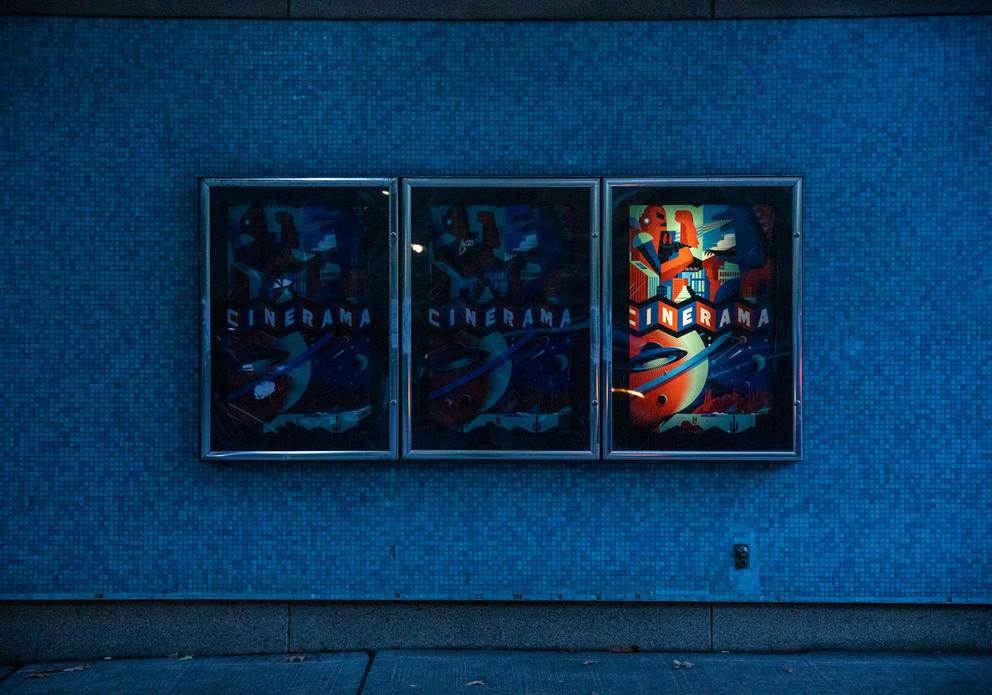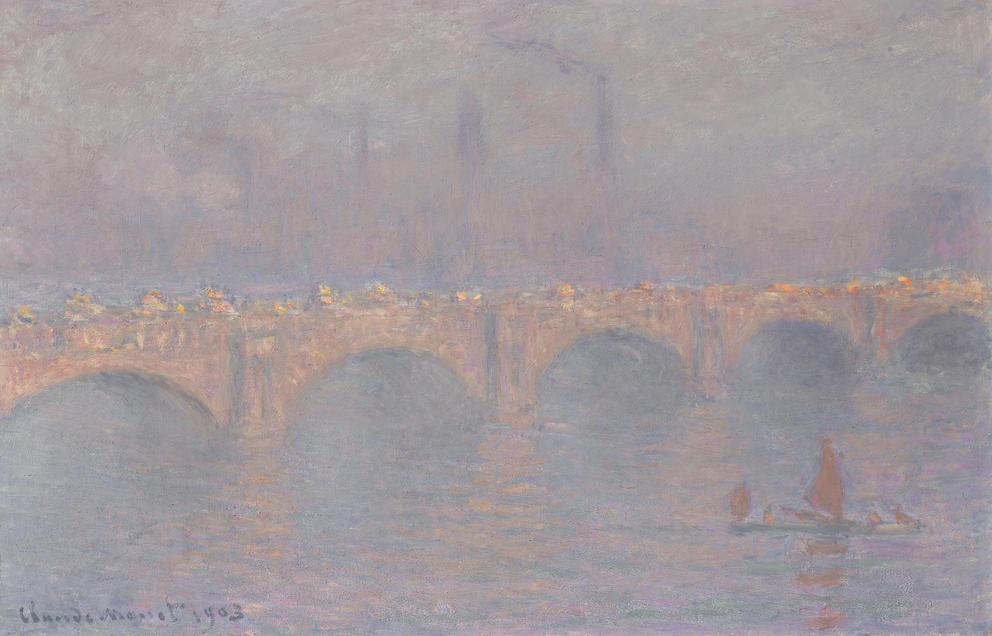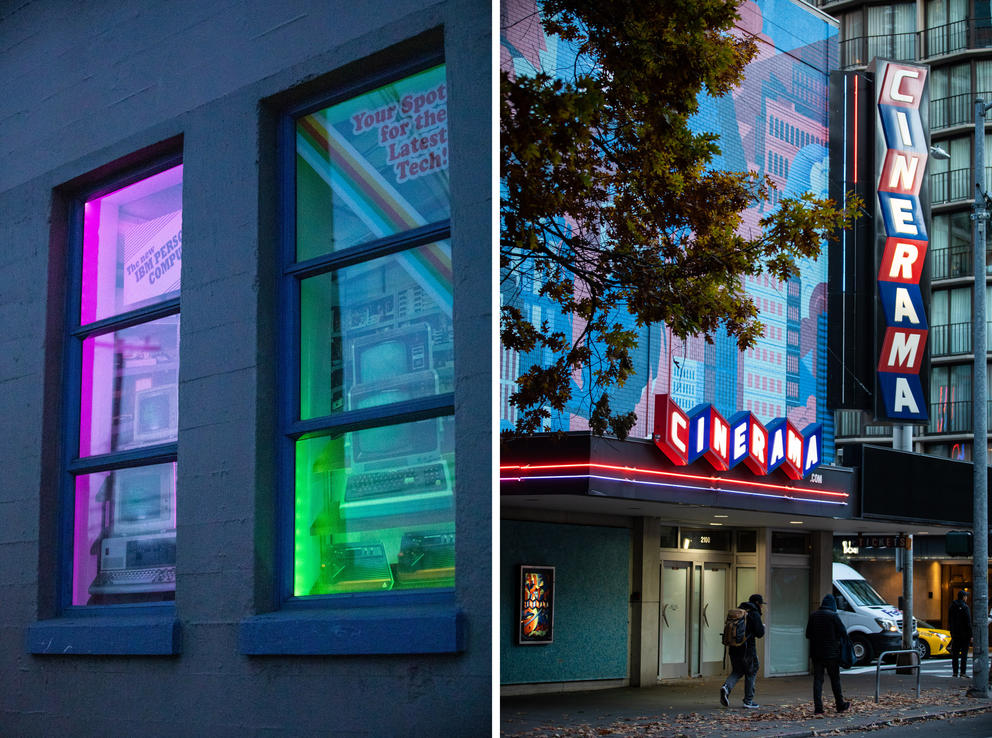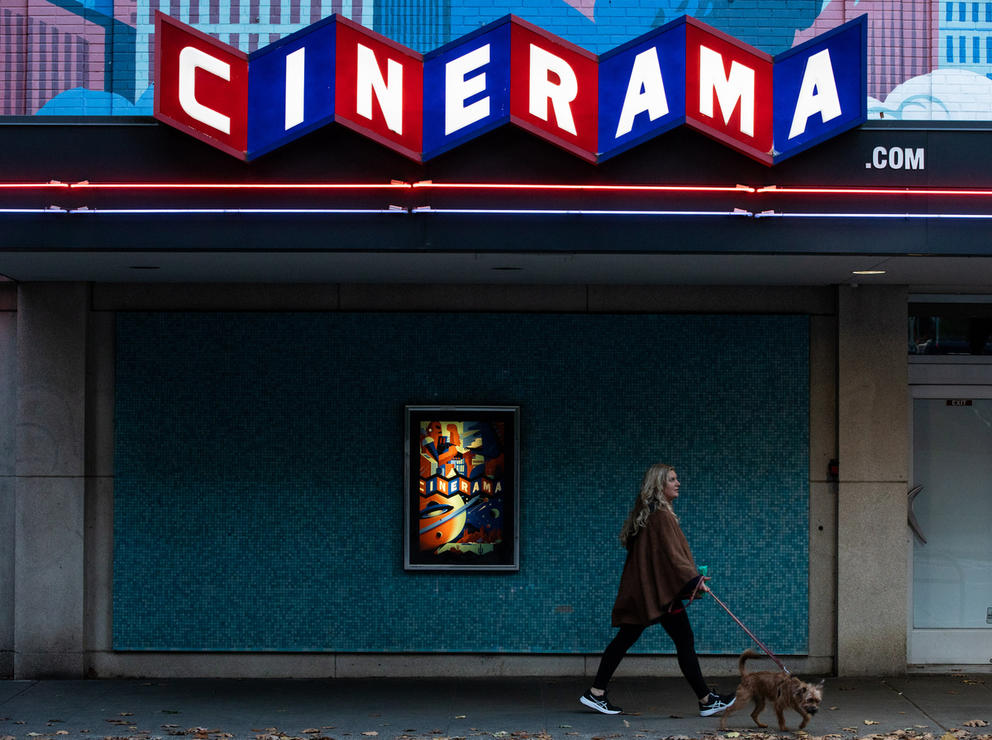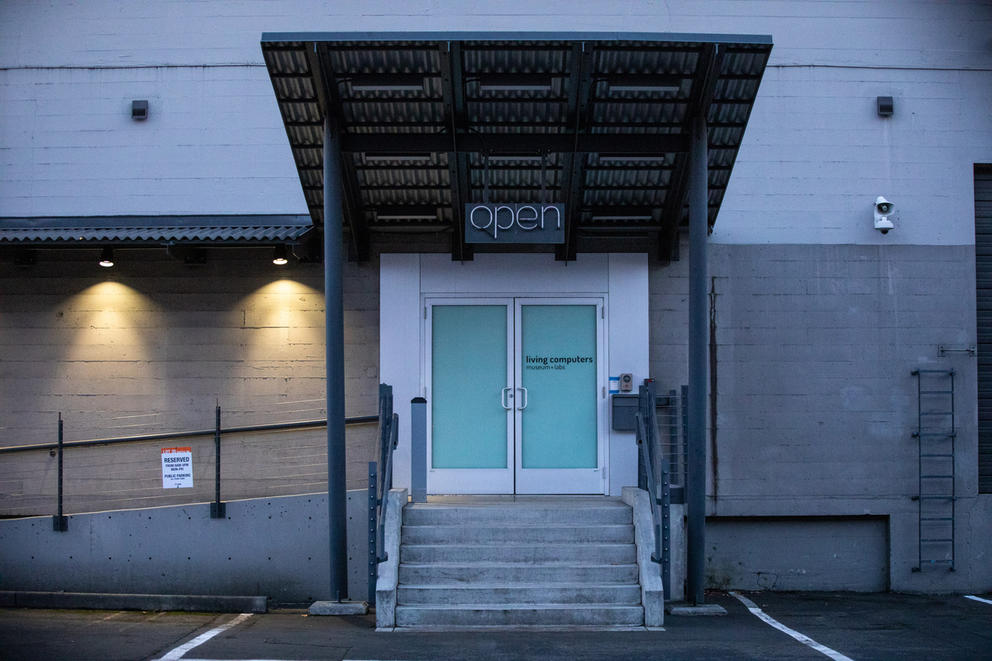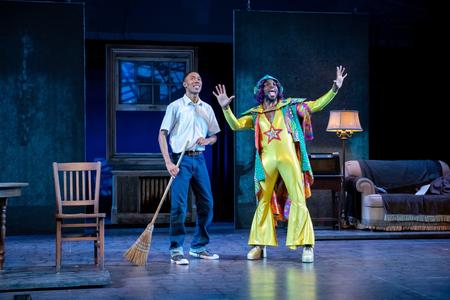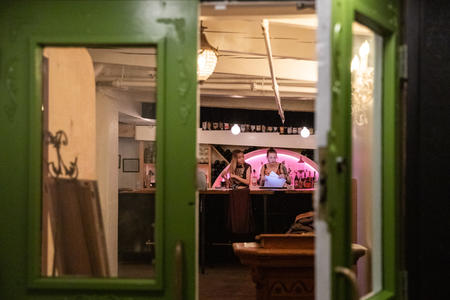For Allen, the co-founder of Microsoft and a billionaire many times over, this wasn’t a reverie. From the 1980s until his death in 2018, the Seattle born-and-raised philanthropist amassed an art collection that would rival a small museum’s. Spanning 500 years of art history and including works by a who’s-who of modern art — Picasso, Van Gogh, Monet, Gauguin — these blue-chip paintings filled Allen’s luxury mansions, condos, yachts and offices across the world. Occasionally some works would show up on loan in museums, but mostly the collection’s contents were kept, as Allen liked it, top secret.
Nearly 200 artworks from Allen’s collection are up for sale this week during a two-day auction at Christie’s in New York. With landscapes by post-impressionist painters Cézanne and Van Gogh selling for more than $100 million each and a trove of multimillion-dollar artworks by auction darlings like Georgia O’Keeffe and Lucian Freud on the block, the sale has already brought in more than $1 billion, setting the record for the most expensive auction ever. And that was just on its first day.
Per Allen’s wishes, the proceeds of the sale will be donated to charity. It’s likely that the gift will mirror Allen’s philanthropic giving during his lifetime, which was broad in scope but centered on education, brain science, cancer research, nature and wildlife conservation, and Pacific Northwest arts. For now, Allen’s estate is keeping any information on precisely where the $1 billion will end up tightly under wraps.
It’s not the only question swirling around the remainder of Allen’s vast estate, the value of which was estimated to be around $20.3 billion at his death and includes sports teams like the Seattle Seahawks and a variety of other ventures. In Seattle, Allen’s hometown, many are wondering how — and if — his support of local arts will continue posthumously.
Allen was a major — and controversial — Seattle arts supporter. In 2012, the national nonprofit Americans for the Arts honored Allen with its Philanthropy in the Arts award.
In addition to giving hundreds of thousands of dollars to Pacific Northwest art nonprofits every year through the Paul G. Allen Family Foundation, the billionaire also started the Seattle Art Fair and the short-lived but impressive Upstream music festival; saved the landmark Cinerama movie theater (one of only a handful in the world capable of showing three-panel Cinerama films); founded the Experience Music Project (now the Museum of Pop Culture) designed by “starchitect” Frank Gehry; and opened three other Seattle-area museums. Allen often pitched these ventures as “gifts” to the city of Seattle.
“His support of the Seattle Art Fair alone makes him a formidable philanthropist and collector locally who really changed things for the better, even if for a short time,” says longtime Seattle gallerist Greg Kucera, from whom Allen purchased artworks during his lifetime. “He may not have done it in traditional ways … hewing closely to an institution, but his foundation seems to have done quite a bit.”
Asked if he saw that legacy continue, Kucera wrote: “Jeezus, I hope so. Truly, I have no idea what the family is up to there. Certainly, support of the [Seattle] Art Fair, Cinerama, and other things changed with his death.”
A number of Allen ventures have gone dark in the past few years, including the Cinerama, the Living Computer Museum and the Flying Heritage & Combat Armor Museum at Paine Field in Everett. Vulcan, the umbrella company for many of Allen’s nonprofit and for-profit ventures, closed and laid off its entire “Arts + Entertainment” and film-production divisions in 2020, rendering the future of the Seattle Art Fair and Cinerama uncertain. (Vulcan’s real estate arm continues to dedicate 0.5% of construction costs toward purchasing and commissioning art for the exterior and interior of its developments.)
In 2019, Paul Allen Family Foundation donations to local arts groups decreased by nearly 80%, from a total of $225,000 to $50,000; the number ticked up slightly in 2020, the last year for which financial details are available.
As was the case when Allen was alive, much remains shrouded in mystery and mired in NDAs. “Allen is known for his nondisclosure agreements; his employees should have ‘No comment’ tattooed on their foreheads, to save journalists time,” art critic Blake Gopnik once wrote. One former employee, who asked to remain anonymous, described Vulcan employees as an “elite group of soldiers” who tightly close ranks once a staffer leaves the fold.
Sealed lips aside, here’s what we know: In 2010, Allen pledged to bequeath the majority of his wealth to philanthropy. (During his lifetime, Allen gave away more than $2 billion, according to the Chronicle of Philanthropy.) Tasked with this mammoth undertaking is his sister Jody Allen, trustee and executor of his estate, who is bound by her brother’s wishes as set out in the trust.
“Everything changed when Paul died, and he left instructions for the future of his assets and named his sister Jody as trustee of the Paul G. Allen Trust and executor of his estate,” a Vulcan spokesperson wrote in an email. “As such, she is obligated to carry out his wishes, which will take time given the size and complexity of the estate.”
Vulcan and Jody have kept their cards close to their chests, but it’s clear the estate has been shedding many of its holdings: a piece of undeveloped land in Beverly Hills with ocean view (purchased by former Google CEO Eric Schmidt; $65 million). Two apartments on New York’s Upper East Side ($101 million). A 4,000-acre Teton Ridge Ranch in Idaho ($35 million). A cluster of Mercer Island properties ($67.1 million). A pod of Allen’s superyachts, including the 300-foot long Tatoosh ($89.4 million) and the 414-foot Octopus.
Allen’s sports teams, the Portland Trail Blazers and the Seattle Seahawks, will likely be sold at some point in the future, though Jody Allen has said in a recent statement that “estates of this size and complexity can take 10 to 20 years to wind down. There is no pre-ordained timeline by which the teams must be sold.”
Here in Seattle, the uncertainty of his arts legacy is encapsulated by the cultural buildings currently sitting in limbo as unused real estate.
The Cinerama and other Allen ventures on hold
In Belltown, the Cinerama’s marquee currently displays only a black void, absent the yellow letters that once advertised a “70 mm film festival” or a Lord of the Rings marathon. Inside, the bulbous, Jetsons-style ’60s lamps are still illuminated, but the doors remain closed, the popcorn unpopped.
In the late 1990s, when it became clear developers wanted to transform the struggling 1960s Cinerama movie theater into a rock-climbing gym or dinner theater, concerned Seattleites circulated a petition to save it. Allen, a pop culture and movie buff who treasured his childhood memories of watching films like 2001: A Space Odyssey on the big screen, answered the call, purchased the building (price tag: $3.75 million), fronted a $5 million renovation and reopened it to great fanfare in 1998.
The Cinerama closed in early 2020 — pre-pandemic — purportedly for renovations, even as it had undergone extensive renovations in 2010 and 2014, and laid off its staff. As the closure dragged on, rumors — about a somewhat chaotic workplace and issues with Vulcan’s management of the theater — started to swirl as Vulcan hit the brakes on the latest round of renovations and kept the theater closed “for the foreseeable future.” The only recent activity in city records comes from late last month when an elevator inspector couldn’t get access to the building for a yearly inspection.
Twenty-five years after the first petition to save the retro theater, a new petition emerged in 2021, this time calling on Jody Allen not to let her brother’s death mean the death of the theater too. The Seattle Times Editorial Board weighed in with an op-ed calling for a “hero” to save the beloved cinema if Vulcan wasn’t up for the task.
The Seattle International Film Festival, the nonprofit that operates three local movie theaters, threw its hat in the ring, noting in a 2021 press release, “SIFF would be well-positioned to maximize the facility’s potential, but, as a nonprofit organization reemerging from COVID closures, would need additional funding or investment to take on the operations of an additional theater.” In a text message, SIFF CEO Tom Mara said that SIFF doesn’t have a plan to acquire or operate the Cinerama, but that “if an opportunity arises, we’d be happy to consider it.”
In SODO, the fortress-like concrete building valued at $9 million that houses the Living Computer Museum — another of Allen’s pet projects — looks like it was abandoned abruptly. It closed during the pandemic, in March 2020, and suspended operations in May that year to reassess when and if to reopen. It never did.
On a recent peek through the door, the lights were on, a hand-sanitizer station standing lonely at the entrance, but no one was there. Electronic monitors advertised membership fees and large neon letters, hanging vertically on a pillar, spelled out the legendary programming sentence: HELLO WORLD.
The future of the nonprofit Living Computer Museum remains unclear. A Vulcan representative said there was no news to share about Cinerama or the Living Computer Museum “at this time,” and noted that “any decisions are required to be made in accordance with Paul’s wishes and are bound by fiduciary obligations.”
As for his other seats of culture: The Experience Music Project — now MoPOP, after four name changes — operates as an independent nonprofit (though it is still connected to the Allens: Jody is a founding director, board chair and personal donor). The Flying Heritage & Combat Armor Museum will also fly an independent path with a new owner, Walmart heir Steuart Walton. The museum should reopen in Everett as the Wartime Heritage Museum next year.
The Seattle Art Fair has also gone solo: Former co-producer Art Market Productions took over management of the fair, which returned to Seattle this past summer. Fair director Kelly Freeman says she’s committed to staying for as long as Seattle wants the fair around: “We have no interest in being a fly-by-night program,” she said.
A return to arts funding
Another question mark hovers above the Paul G. Allen Family Foundation. From the late 1980s through the 2010s, the private foundation founded and led by Paul and Jody Allen gave millions of dollars to arts organizations throughout the Pacific Northwest, including the Pacific Northwest Ballet, the Seattle Art Museum and the Seattle Symphony, as well as to smaller organizations like Intiman Theatre and On the Boards.
But around 2012, Allen’s priorities seem to have shifted. According to publicly available documents filed with the Internal Revenue Service, the Foundation’s grants and donations to Washington state arts organizations dwindled from roughly 12% of its yearly giving to half a percentage point in 2018, the year of Allen's death, and from more than 30 organizational recipients a year to just a handful the year of Allen’s death.
The next year, that further decreased to 0.1%, or $50,000 total — an amount multiple individual Seattle organizations would once have received from the Foundation. Many Seattle nonprofits have stopped counting on funding from the Foundation.
But during a recent interview at the Vulcan offices downtown — with views of King Street Station, the Allen-owned Lumen field, Elliott Bay and the Seattle skyline — a team of Vulcan employees stressed that things were changing. The Foundation, as advised and managed by Vulcan’s “Partnerships & Programs” team (and its new “Arts & Communities” division), is recommitting to the arts. “It’s a new time,” Cat Martin, Vulcan’s new Director of Arts & Communities, said. “We consider ourselves coming back in a new phase, and a new way.”
Martin traced the decision to the arrival of new leadership to the Foundation’s board since Allen’s death, as well as the disproportionate impact the pandemic has had on the arts sector — and the long road to recovery many predict.
While the Allen Family Foundation’s 2021 giving has not yet been publicly reported beyond a few press releases, this fall the foundation announced it would donate $10 million to ArtsFund, a Washington state art-granting organization. ArtsFund plans to set up a community advisory panel and disburse the money to local arts organizations across the state, starting in 2023.
The recent gift is a remarkable increase in giving for the foundation, but it also marks a strategy shift: “Really letting the community decide where the resources should be put,” summarized Lara Littlefield, Vulcan’s executive director for partnerships and programs. To that end, Vulcan is forming an Arts & Community Advisory Council to help inform strategy and advise the foundation.
It’s also a way to reach organizations that haven’t had access to traditional philanthropy, she added. “We see it as a new model.”
After a listening tour with various art funders and local arts organizations, Littlefield said it became evident that people were wary of Allen’s previous, more top-down approach. “We heard very clearly from the community: ‘Don’t come in hot and fast. Understand what’s already here and learn from those doing the work,’” she said. “So it’s not just about standing up a building and putting our name on it. Because the buildings end up empty sometimes.”
Littlefield said that she anticipated that the foundation would continue and even increase its support of the “arts and communities” in the next few years. But she also said that the donation to ArtsFund was a “learning pilot” in the entrepreneurial spirit of Vulcan and Paul Allen.
This entrepreneurial approach to philanthropy has sometimes rubbed Seattle arts organizations the wrong way. When Allen was alive, critics categorized his funding, at times, as based on whims.
Some local artists and nonprofits still have flashbacks from 2014, when the foundation’s giving suddenly stopped without explanation. Or when, in 2016, Pivot Art + Culture, Allen’s hyped South Lake Union art space, whose first show featured some of the masterworks from Allen’s collection, shuttered after just a few months without any reason given.
“That’s the biggest issue with all of this, and I’ve seen this over and over again, with many rich people: They giveth and they taketh away,” said a longtime local art curator who asked to remain anonymous for fear of professional repercussions. “It’s the speed at which things happen and the no-warning that is the worst thing for artists and nonprofits.”
Many arts administrators are wary of speaking publicly about Vulcan’s funding habits. (“I have to be very careful,” one nonprofit leader said about speaking out about arts funding in the city. “It is very politicized. I need to protect the little that we get.”) Others, including Erin Johnson of dance nonprofit Velocity, noted that the funds are welcome as the arts sector tries to recover from the pandemic.
But will it be enough? “$10 million out of a $20 billion estate? Eh. Color me unimpressed,” said a local arts consultant who asked to remain anonymous. “$10 million one time is unimpressive,” they added over email, “$10 million a year is a good start.”
In an email, Tim Lennon of Central District arts organization LANGSTON echoed the sentiment. He called $10 million, while much-needed and welcome, “a drop in the bucket” given the challenges the sector faces. “It’s not lost on me that the week the Paul G. Allen Family Foundation announced this initial ten million dollar investment, Christie’s New York was previewing their one billion dollar auction of Mr. Allen’s personal art collection,” Lennon wrote.
The question now is whether Allen’s impact on the local arts scene will remain visible or disappear, as did one of his artworks from public view recently.
For years, “Typewriter Eraser, Scale X” (1999), a 19-foot-tall pop-art sculpture based on the real-world vintage device by Claes Oldenburg and Coosje van Bruggen, stood in the center of the roundabout entrance of Seattle’s MoPOP. Its blue tassel brush — to swipe away the erased flecks of pencil on paper — seemed to sway in the wind. You can see why this oversized commentary on dead technology and the march of progress appealed to Allen, who purchased it the year it was made.
But the eraser seems to have been erased. On a recent visit, the MoPOP roundabout’s central island showcased an empty ring of shrubbery instead. The disturbed soil at the center of the circle indicated something had been uprooted. The artwork reappeared on the auction block at Christie’s, where it sold for $8.4 million.
Note: This story was updated on Nov. 10 to reflect the final sale price of “Typewriter Eraser, Scale X.”
Get the latest in local arts and culture
This weekly newsletter brings arts news and cultural events straight to your inbox.

